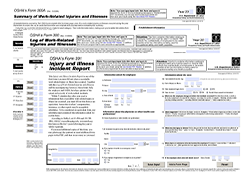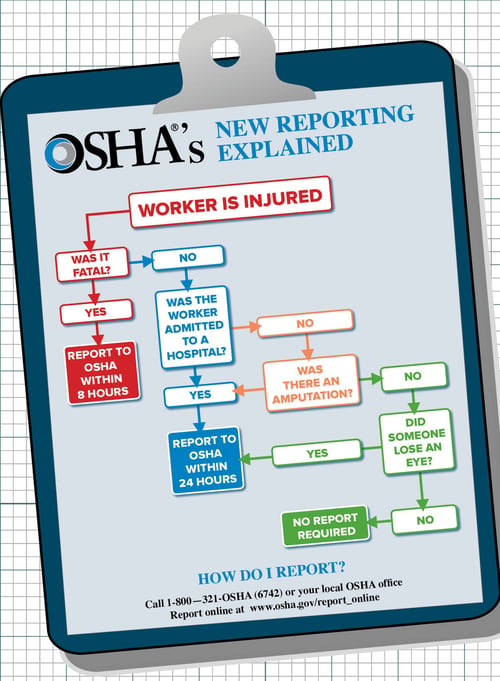 Have you been following proper procedures for injury and illness recordkeeping and reporting? OSHA announced an update to the rule in September 2014 and changes went into effect on January 1, 2015. Even though it has been over a year since the rule change, it is important to take time and ensure your organization is in compliance each year.
Have you been following proper procedures for injury and illness recordkeeping and reporting? OSHA announced an update to the rule in September 2014 and changes went into effect on January 1, 2015. Even though it has been over a year since the rule change, it is important to take time and ensure your organization is in compliance each year.
What events must be reported to OSHA?
All employers are required to report work-related fatalities within 8 hours AND all work-related inpatient hospitalizations, all amputations, and all losses of an eye within 24 hours.
Reports can be made to OSHA in one of 3 ways: calling 1-800-321-OSHA, calling the closes Area Office, or using the online form.
For work-related fatalities, only those occurring within 30 days of the work-related incident must be reported to OSHA. And likewise, for an inpatient hospitalizations, amputations, or loss of an eye, they must only be reported if they occur within 24 hours of the work-related incident.
Who is required to prepare records? Are there any exemptions?
Many employers are required to prepare and maintain reporting records, but there are some exceptions in place:
- Small Employers – Employers with 10 or fewer employees at all times of the year are exempt from completing the forms. The employee count should include full-time, part-time, temporary, and seasonal workers.
- Low-Hazard Industries – Employers classified as a partially exempt industry do not have to complete the forms. To see the list of industries, click here.
What forms must be completed?
Employers have 3 forms to complete:
- OSHA Form 300 – Log of Work-Related Injuries and Illnesses
- OSHA Form 301 – Injury and Illness Incident Report
- OSHA Form 300A – Summary of Work-Related Injuries and Illnesses
Forms 300 and 301 are maintained throughout the year, while the Form 300A must be completed at the end of a calendar year.
Any employer required to complete Forms 300 and 301, must also complete and display Form 300A in the workplace each year from February 1st to April 30th. It needs to be posted in a conspicuous place in each establishment. Current and former employees, or their representatives, have the right to review this form. Even if your company did not experience a loss during the previous year, the Form 300A must be completed and posted. This form is not to be sent to OSHA unless requested.
What cases are considered recordable?
Incidents must meet the following criteria to be considered recordable:
- Injury or illness – an abnormal condition or disorder; exposures not resulting in signs or symptoms are not considered injuries or illnesses
- Work-related – cases caused, contributed to, or significantly aggravated by events or exposures in the work environment
- Meet certain severity criteria – causing death, loss of consciousness, days away from work, restricted work activity, job transfer, or medical treatment beyond first aid
For more details on how OSHA defines each criterion, as well as other special criteria, click here for their reporting FAQs.
Additional Resources
This blog only reviewed the recordkeeping requirements at a high level. To dig deeper into the specific rules and each form, I’d encourage you to check out the resources available on OSHA’s website.
OSHA has a variety of resources available on the topic of reporting and recordkeeping. See below for helpful links:
- Recordingkeeping and reporting requirements page
- Detailed guidance for the injury and illness recordkeeping rule
- Brief tutorial on completing the recordkeeping forms
- Injury and illness forms
- The Search Q&A function allows you to use keywords to search the repository of questions and answers
- Recordkeeping Advisor allows you to walk through the logical process of the rule
Please do not hesitate to reach out to me or another member of the loss prevention team should you have any questions!






